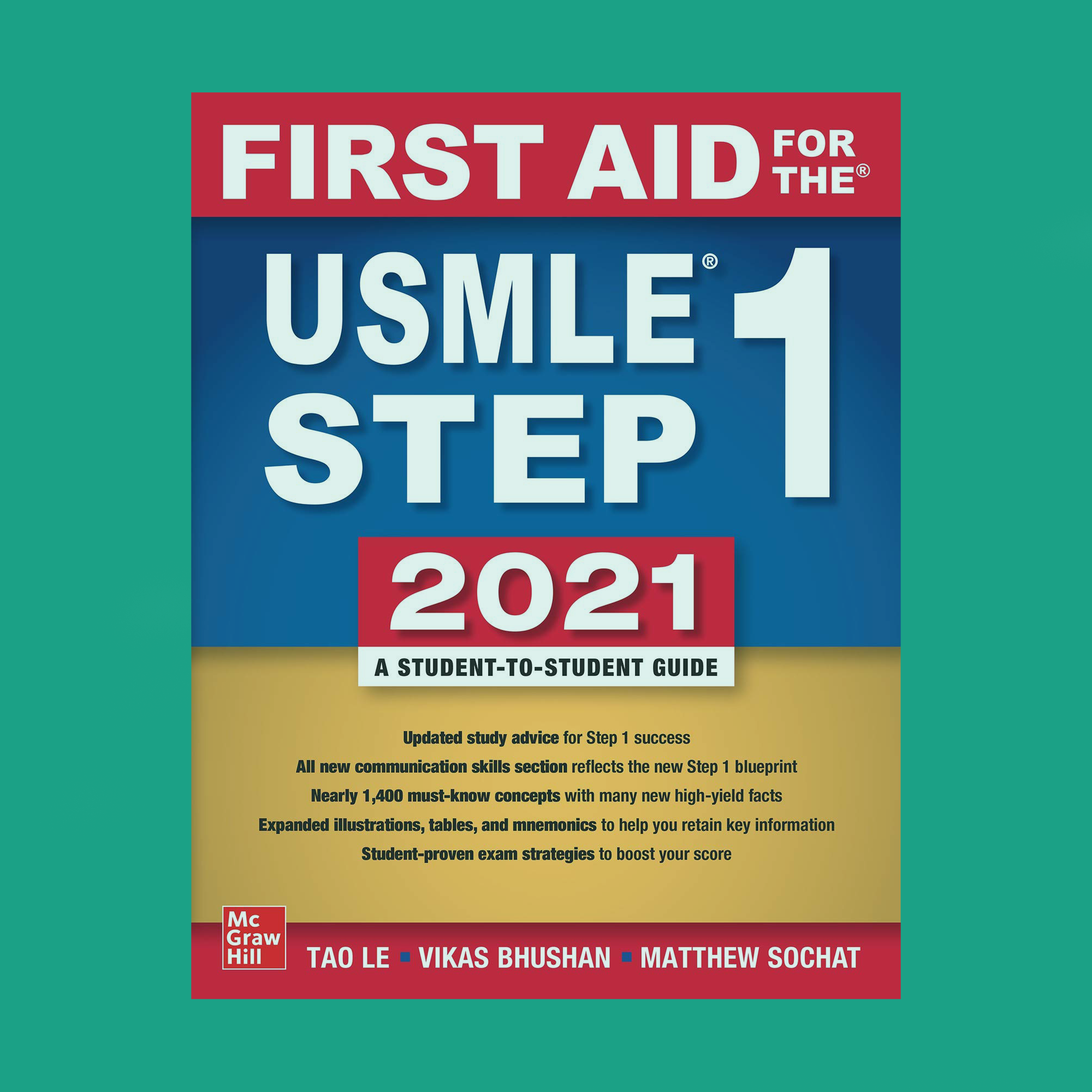How Med Students Are Using First Aid in 2021
- by
- Nov 03, 2021
- Reviewed by: Amy Rontal, MD

A first hand look at how medical students are using the classic USMLE prep textbook in 2021.
The holy grail of medical school texts is, without a doubt, First Aid for the USMLE. Personally, it wasn’t until I was on the verge of failing my first term of medical school (eek!) that the book was even mentioned by one of my academic advisors. I still question why this resource wasn’t brought up to me at the very start of my MS1 year.
My best guess is that my advisor, like many others, thinks of First Aid as a “dedicated” prep resource. Despite this common belief, my peers and I would argue that the sooner you familiarize yourself with First Aid, the better. We’d even go so far as to say – you really can’t afford to wait!
So, what turned me into a First Aid convert? Quite simply, it provides an organizational framework that makes highly testable topics approachable and accessible.
Medical school approaches to M1 and M2 curricula may vary, and the ordering of your particular course structure may not be intuitive for you. First Aid is organized in such a clear way that it can actually provide a “backbone”, or scaffold, for how you think about all the content you’re learning. It’s also absolutely beautifully indexed. (I cannot tell you how many times I looked to the index for “anemias” before I finally just tabbed the page.)
…my peers and I would argue that the sooner you familiarize yourself with First Aid, the better. We’d even go so far as to say – you really can’t afford to wait!
Beyond sheer organizational power, the framing given throughout the book around “what’s actually important” (e.g. “what enzyme in this 15-step pathway is truly testable”) is imperative to success while studying for school exams, NBMEs, and medical boards. Having one single resource that you refer to over and over makes life so much easier when you’re forced to go back and review material for exams later.
Now, as for the actual text: The textbook (or PDF if you prefer) is by no means your be all end all for exams, but, it will give you high-yield, big picture concepts. These are, as you’d expect, particularly relevant to your M1 and M2 years, and can make the topics feel less overwhelming. The text condenses large amounts of information, bolds key terms and takeaways, and includes clinical correlates in many places, which will help prepare you for the way test questions around these topics are structured. I invested in some tabs/ page flags that I would use for topics I constantly had to refer to, i.e., autonomics, anemias, glycolysis, neurocutaneous syndromes, diabetes drugs.
I also recommend having an intentional highlighting system to facilitate mental connections between content. By intentional highlighting system, I mean that you should have specific roles for different shades of highlighter, and essentially maintain that “legend” throughout your highlighting of First Aid. If you’ve been looking for an excuse to run to the hobby store and pick up that fancy highlighter pack – this is your moment. Try this style of intentional highlighting out, and, before long, you’ll be “seeing” the text in your mind when you test! My personal method looked something like this:
Pink = disorder
Green = drug or key enzyme
Blue = microorganism
Yellow = other key takeaway
Red = YOU HAVE MIXED THIS UP IN THE PAST (in my experience…some yellows just have to evolve to reds)
If you’ve read the above and you’re now ready to become a prophet of First Aid, my job is done! That said, if you’re curious to read a bit more about my own use of First Aid, the next few paragraphs are a brief summary of my own approach to the text and how I used it to prepare for Step 1.
During “Basic Sciences”, aka, M1 and M2 years at most schools, the lectures were somewhat topic/subject specific. All medical schools teach a bit differently, but I would always at least “preview” lectures the day before or day of to see what was coming. This is something I didn’t do early on when I was struggling, mainly because there never seemed to be enough time. Turns out – that was a mistake! Later on, after I was introduced to First Aid, this concept of“previewing” became so helpful for repetition that it ultimately led to me to excel in all my later terms.
I’ve talked to several peers enrolled in various MD and DO programs, and we all say the same thing about med school – “it’s just so much info.” While this is true, the perk of First Aid is that it can serve as that one resource that will put the little details you learn in lecture into perspective. First Aid often gave me the “big picture” or answered my never-ending question of “why do we need to know this”. This is explicitly because First Aid the clinical significance that you may not get in a lecture until a few days later. So again, you’re ahead in a sense because you already know why a piece of information is important, which leads to better understanding and memory solidification!
…this concept of“previewing” became so helpful for repetition that it ultimately led to me to excel in all my later term
As for my approach to specific subjects:
Biochemistry: Preview – I’d glance at the entire pathway in First Aid and note to self any clinically significant info.
Pharmacology: Preview – The book gives clear mechanisms of action and side effects, which I’d review before class. I would add or highlight additional side effects if they were emphasized in lecture.
Pathology: Honestly, I varied in whether I reviewed the content before or after lecture. First Aid is particularly useful for giving you a 1-2 page snapshot of what may take 50 slides in class.
Micro: Preview – I would flip through First Aid to familiarize myself so I’m not so overwhelmed during lecture, but I wouldn’t try to delve in too heavily until after class was over.
Later, I also used First Aid during dedicated USMLE Step 1 Review. When I reviewed a class lecture or even a topic, I would always make sure to have First Aid open to that same topic. I would then add in any detail or information that wasn’t in the book as side notes in the margins. That way, I could use First Aid as my study hub/scaffolding resource, especially later in prep when there was literally no time to go through all the lecture slides.
Even now, I find myself flipping back to lysosomal storage disorders and pediatric bone tumors in my First Aid – my Ole Faithful – to prepare for shelf exams. So, bring home your copy – or dust it off – and start organizing your med school studies today!
First Aid is naturally one of the most popular resources added to Cram Fighter study schedules. Cram Fighter has done the work of dividing the book down the individual page, so you can map out a detailed schedule to review the book (or just specific subjects or systems) with a couple clicks! Sign up for a free 7 day Cram Fighter trial now and add First Aid to your selected resources.
About the Author
Ashton K. Henley is a third year medical student at St. George's University. She considers herself a 'non-traditional' student with over 10 years of experience in the insurance side of medicine. She is passionate about the importance of patient education and plans to become a family medicine physician with additional fellowship in integrative or palliative care medicine.









